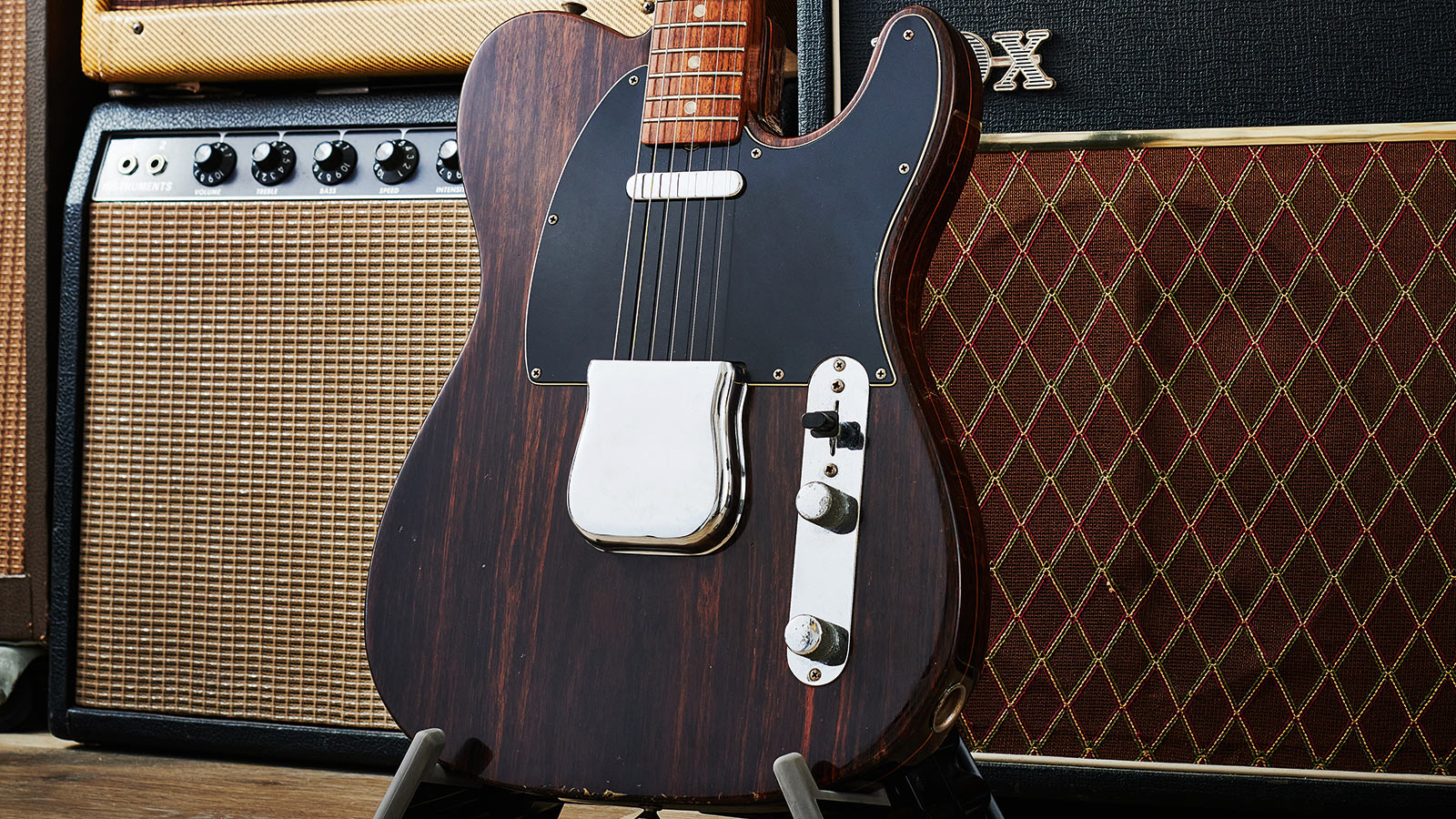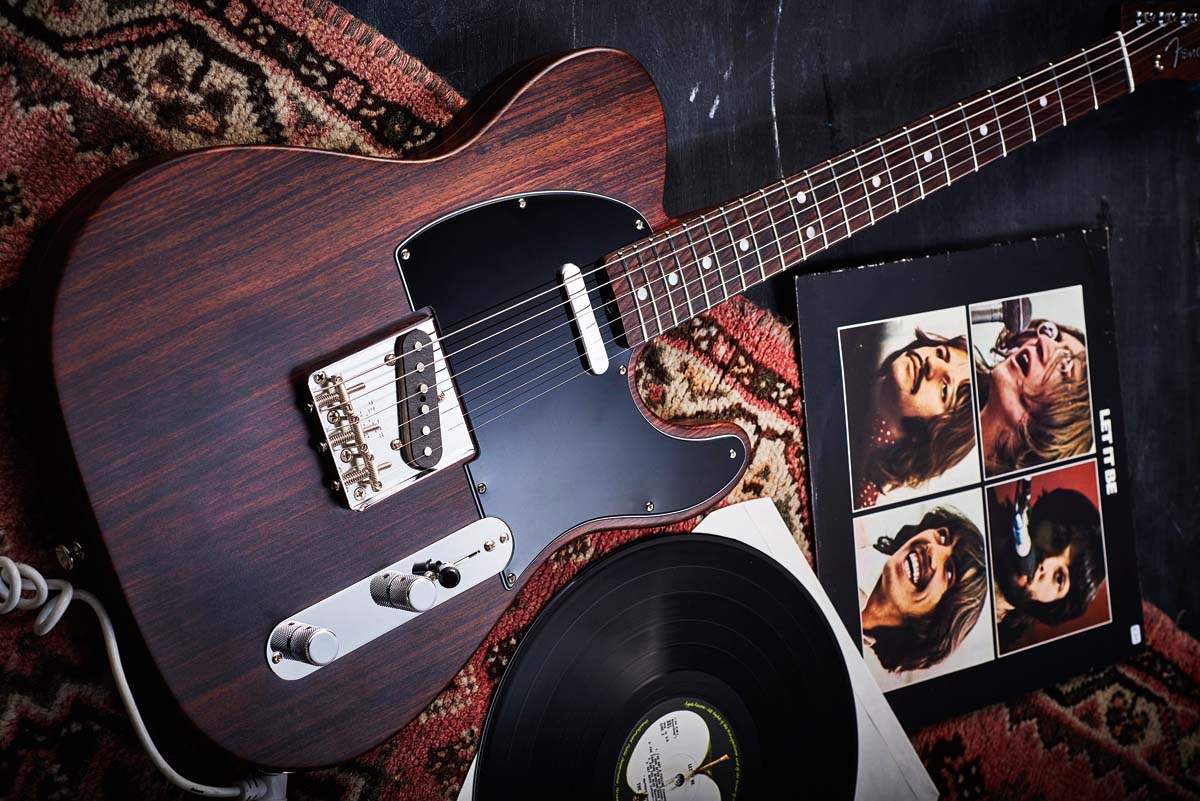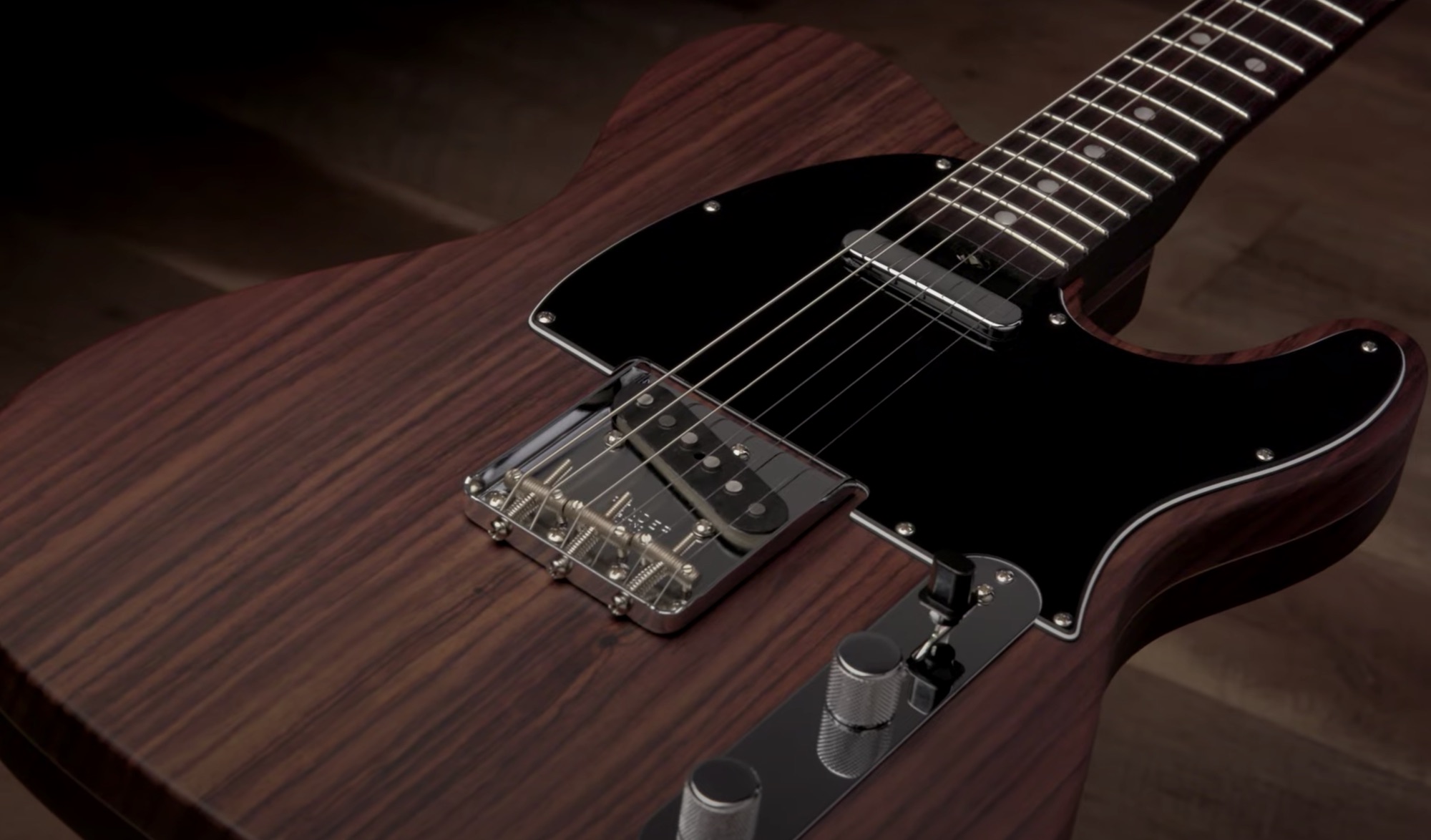The rise, fall and rebirth of Fender’s Rosewood Telecaster – the solidbody made iconic by George Harrison
The story of a cult classic Telecaster that began life as a prototype for George Harrison, and was introduced to the world when he played it at the Beatles' 1969 rooftop gig

Rosewood Telecasters have been in and out of regular Fender production several times since 1969.
A reworking of Fender’s seminal solidbody electric guitar design by craftsmen Roger Rossmeisl and Philip Kubicki, the prototype guitar was custom-built for George Harrison in 1968 alongside an equivalent-style rosewood Stratocaster intended for Jimi Hendrix. While Hendrix sadly never received this Strat, Harrison famously used his Rosewood Tele for The Beatles’ historic rooftop concert on 30 January 1969.
Harrison’s instrument was unique. It sported a pre-CBS ‘spaghetti’ logo, a satin finish and a rosewood ‘cap’ fingerboard atop a solid rosewood neck.
When regular production of the Rosewood Telecaster commenced in 1969, Fender built its new model using a bolder mid-60s ‘transition’ logo, rather than a contemporary black CBS-era decal that would be tricky to see against dark rosewood.

Poly finishes had largely superseded nitrocellulose by the late 60s and the new Rosewood Tele was adorned with this hardwearing, glossy alternative. Standard production Rosewood Teles of this era are also easily identified by a maple plug and ‘skunk stripe’ as Fender brought back its original 50s-style fretted neck design during this time.
Harrison’s instrument was unique. It sported a pre-CBS ‘spaghetti’ logo, a satin finish and a rosewood ‘cap’ fingerboard atop a solid rosewood neck
Fender’s initial launch of the Rosewood Telecaster was somewhat underwhelming. Despite The Beatles association, no bespoke advertisements were created.
The model merely popped up on the price list marked at $375 in May 1969 and was unceremoniously described as “Telecaster, (Dual Pickups) Rosewood.” (By comparison, a regular Tele with a rosewood ’board cost $269.50.)
Get The Pick Newsletter
All the latest guitar news, interviews, lessons, reviews, deals and more, direct to your inbox!
By spring 1970, the Rosewood Telecaster was nowhere to be seen on the Fender price list and was apparently unavailable throughout 1971.
The model made a reappearance in February 1972 when it was confusingly touted as “new”, before being omitted again the following year. Hence, the vintage Fender Rosewood Telecaster is a relatively rare guitar. Educated guesses put production figures in the low hundreds.
Such scarcity, coupled with the desirability of being an iconic Beatles guitar, has meant Rosewood Teles are easily pushing into five figures these days. Some Fender Custom Shop models go for several thousand pounds, too. More often than not, these are prototype/Harrison-style instruments with pre-CBS logos, satin finishes and glued-on rosewood fingerboards.
Such scarcity, coupled with the desirability of being an iconic Beatles guitar, has meant Rosewood Teles are easily pushing into five figures these days
In 1986, the Rosewood Telecaster made a comeback as part of Fender’s Limited Edition series when it reappeared on price lists at $699. Made in Japan, these are fairly accurate recreations of the earlier standard production guitars and have become sought after by players. In the 1990s, Japanese-made Rosewood Telecasters were offered in Fender’s Reissue Series.
Over the years, numerous Custom Shop Rosewood Telecaster models have been released sporting the popular Harrison-style prototype specs, and in 2017 Fender launched the George Harrison Rosewood Telecaster in a run of 1,000 instruments. With Peter Jackson’s 2021 documentary The Beatles: Get Back creating a renewed interest, the same model was re-released this year as a “limited-edition tribute”.
As per previous Rosewood Telecasters, these guitars are chambered to alleviate weight (rosewood is generally a dense, heavy wood) and feature a maple centre veneer separating the laminated top and back.

Key features
SERIAL NUMBER
Six-digit number stamped onto steel neck plate marked with ‘F’ logo (normally between 252000 and 291999 in 1969).
HEADSTOCK
Single ‘butterfly’ string tree, Fender transition logo decal; maple plug.
PLASTICS
Three-layer black/white/black laminated pickguard; black selector switch tip.
HARDWARE
Metal bridge plate; six metal ferrules; two metal strap buttons; three adjustable steel saddles. Chrome-plated: ‘ashtray’ cover; single ‘F’ logo tuners; two knurled knobs (volume and tone); control panel; recessed side jack.
PICKUPS
Single-coil bridge pickup with staggered polepieces; single- coil neck pickup with chrome- plated cover; three-way selector switch; two 1meg-ohm pots (volume and tone).
BODY
Rosewood top and back; maple veneer centre; chambered; poly finish.
NECK
Single-piece fretted rosewood; maple ‘skunk stripe’ and headstock plug; 21 frets; pearloid dot markers.
The Evolution of the Fender Rosewood Telecaster
- 1968: Prototype built by Roger Rossmeisl & Philip Kubicki
- January 1969: George Harrison plays prototype during rooftop concert; pre-CBS logo; satin finish; no skunk stripe
- May 1969: Appears on price lists; transition logo; gloss finish; skunk stripe; omitted from price list April 1970
- February 1972: Reappears on price lists; omitted from price list again January 1973
- 1986: Limited Edition Series; production specs; made in Japan
- 1990s: Reissue Series Rosewood Telecaster; production specs; made in Japan
- 2007: Custom Shop Rosewood Telecaster; prototype specs
- 2017: George Harrison Rosewood Telecaster; limited edition run of 1,000; prototype spec
- 2022: George Harrison Rosewood Telecaster re-released; prototype specs
Rod Brakes is a music journalist with an expertise in guitars. Having spent many years at the coalface as a guitar dealer and tech, Rod's more recent work as a writer covering artists, industry pros and gear includes contributions for leading publications and websites such as Guitarist, Total Guitar, Guitar World, Guitar Player and MusicRadar in addition to specialist music books, blogs and social media. He is also a lifelong musician.
“Finely tuned instruments with effortless playability and one of the best vibratos there is”: PRS Standard 24 Satin and S2 Standard 24 Satin review
Epiphone brings one of Gibson’s most desirable one-off finishes to the masses with Guitar Center-exclusive Widow Les Paul – but it’s been given a twist













